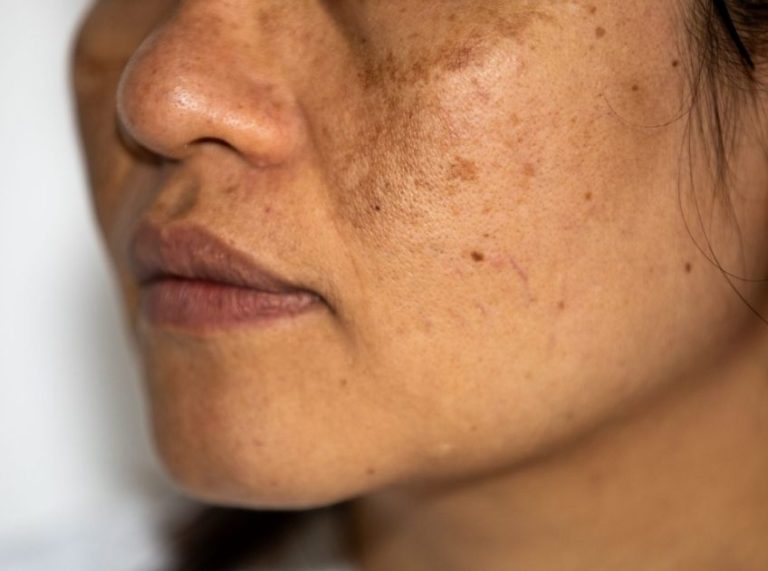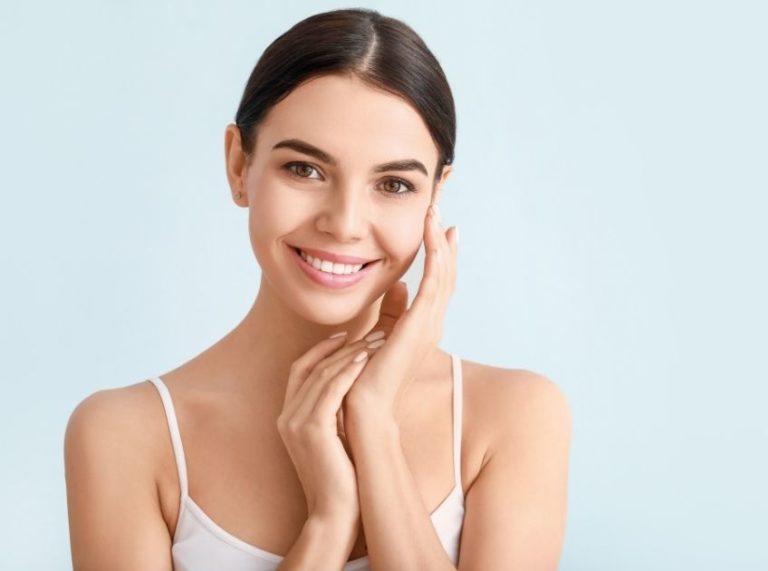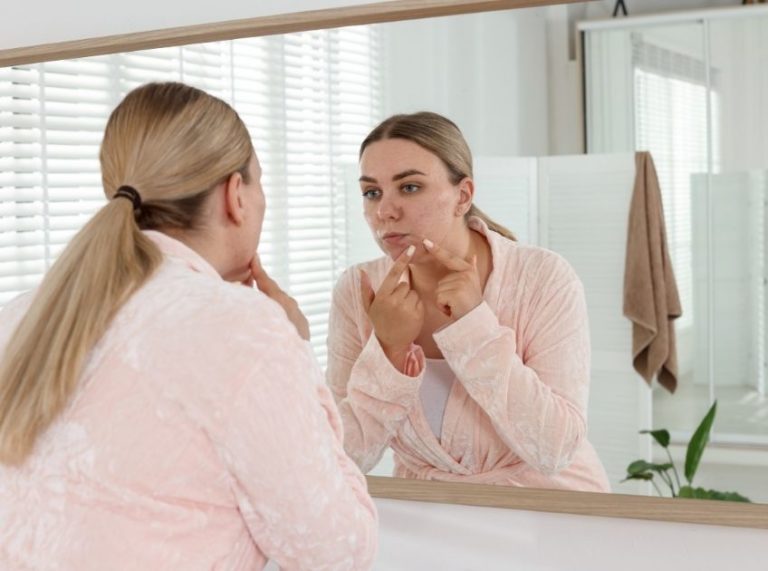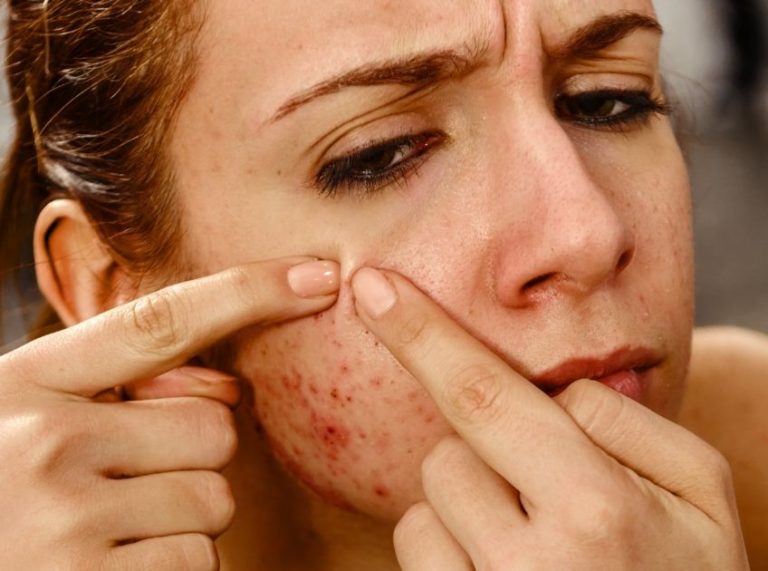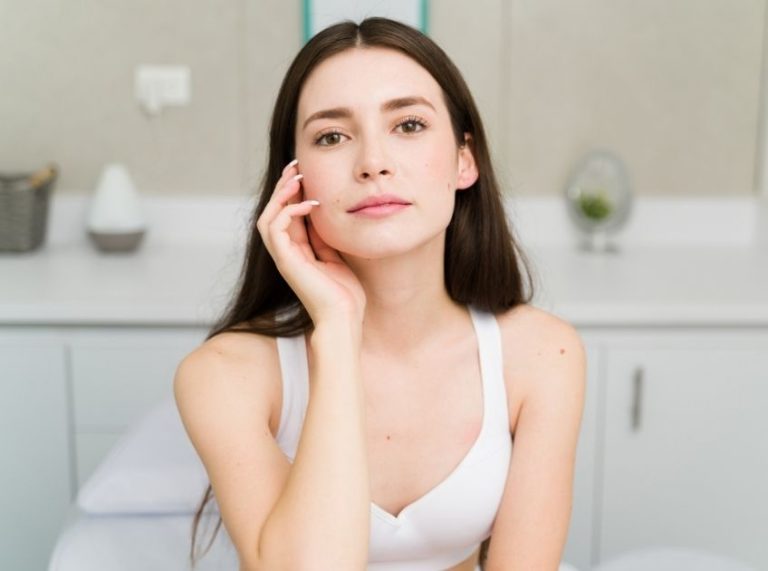
Important: This article is for informational purposes only. Please read our full disclaimer for more details.
Hickeys—aka love bites—may be signs of passion, but they’re not always welcome souvenirs. These purple or reddish marks are essentially bruises caused by broken blood vessels under the skin. While harmless, they can take up to two weeks to fade. Fortunately, some essential oils can help lighten them naturally, thanks to their circulation-boosting and anti-inflammatory properties (1).
Top Essential Oils That Help Fade Hickeys Fast
Essential oils are potent botanical extracts that offer a wide range of healing benefits, especially for minor skin injuries like hickeys. When blood vessels under the skin break due to suction or pressure, they cause the discoloration known as a hickey. Some essential oils are known to increase circulation, reduce inflammation, and promote skin regeneration—all crucial for speeding up the healing of a hickey.
Here’s a closer look at the most effective essential oils for treating hickeys:
1. Lavender Oil – Nature’s Skin Healer
Lavender essential oil (2) is one of the most versatile oils in natural skincare. Its anti-inflammatory and calming properties help reduce the redness and swelling associated with hickeys.
- How it works: Lavender promotes faster healing by improving skin cell turnover and soothing irritation.
- Bonus: It also has a gentle scent that calms the mind, reducing stress-induced skin issues.
2. Helichrysum Oil – The Bruise Repair Expert
Often called the “immortelle” or “everlasting” oil, helichrysum is particularly effective for bruises and vascular damage.
- How it works: Rich in diketones, helichrysum has anti-hematomal and circulation-enhancing properties, helping break down pooled blood under the skin (3).
- Ideal for: Darker or larger hickeys that are slow to fade.
3. Frankincense Oil – The Skin Regenerator
Frankincense is known for its cell-regenerating abilities and ability to tone and restore skin (4).
- How it works: It boosts blood flow and supports faster repair of damaged tissues.
- Perfect for: Preventing long-term discoloration or lingering marks from deep hickeys.
4. Cypress Oil – The Circulation Booster
Cypress oil is widely recognized for its vasoconstrictive and circulatory-stimulating properties, which help break up stagnant blood and lymph (5).
- How it works: Promotes the reabsorption of the blood that causes the purple coloration of a hickey.
- Recommended for: Fresh hickeys where discoloration is still intense.
5. Peppermint Oil – The Cooling Fix
With its high menthol content, peppermint oil (6) offers an immediate cooling sensation and increases blood circulation to the applied area.
- How it works: The menthol stimulates blood flow, dispersing the blood trapped under the skin and reducing swelling.
- Good for: Early-stage hickeys or pairing with a cold compress.
How to Apply Essential Oils the Right Way (Step-by-Step)
Using essential oils to lighten a hickey isn’t just about picking the right oil—it’s also about applying it correctly to get results without irritating. Since essential oils are highly concentrated, they must be handled with care. Here’s a complete guide on how to safely and effectively apply essential oils to help fade a hickey.
What You’ll Need:
- Essential oil of your choice (e.g., lavender, helichrysum, peppermint)
- Carrier oil – 1 tablespoon (e.g., coconut oil, sweet almond oil, or jojoba oil)
- Cotton swab, cotton ball, or clean fingers
- Gentle cleanser (optional, for cleaning the skin)
- Clean towel or tissue
Step-by-Step Application Instructions:
Step 1: Dilute the Essential Oil
Essential oils should never be applied directly to the skin without dilution. Doing so can lead to irritation, redness, or even burns.
- Mix 1–2 drops of essential oil with 1 tablespoon of a carrier oil in a small bowl or the palm of your hand.
- Stir or blend gently until fully mixed. This dilution ensures the oil is safe for direct skin contact, especially on sensitive or bruised areas like a hickey.
Step 2: Clean the Area Thoroughly
Before applying the oil blend, it’s essential to clean the skin.
- Use lukewarm water and a gentle cleanser to wash the area around the hickey.
- This removes any sweat, dirt, or product buildup that might interfere with oil absorption.
- Pat the area completely dry with a clean towel—never rub, as this could aggravate the bruise.
Step 3: Apply the Diluted Oil Gently
Use a cotton swab, cotton ball, or your fingertip to apply the diluted essential oil.
- Dip the applicator into the blend and gently dab it onto the hickey.
- Avoid pressing too hard—your goal is to soothe the skin, not apply pressure that could worsen the bruise.
Step 4: Massage in Circular Motions
Once the oil is applied, use soft, circular motions to massage the area for 1–2 minutes.
- This light massage stimulates circulation, encouraging the pooled blood under the skin to disperse more quickly.
- Use just your fingertips and be careful not to irritate already-sensitive skin.
Frequency and Duration:
- Apply twice daily—once in the morning and once before bed.
- Continue this routine for 3 to 5 days or until the hickey visibly fades.
- If you notice any irritation, reduce usage to once a day or discontinue entirely.
Optional Tip: Use a Warm Compress Before Application
For older hickeys (over 48 hours old), using a warm compress for 5 minutes before applying essential oils can help:
- Open pores for better oil absorption
- Relax blood vessels and boost circulation
How to do it:
Soak a clean cloth in warm water, wring out excess water, and place it gently on the hickey for 5 minutes before oil application.
When to Stop Using Essential Oils
Discontinue use if you experience:
- Redness or rash around the application area
- Burning or stinging sensations
- Skin peeling or dryness
These may be signs of sensitivity or an allergic reaction. If symptoms persist, consult a dermatologist.
Are Essential Oils Safe for Hickey Treatment?
Yes, but with precautions. While essential oils are natural, they are potent and should always be diluted before use. Avoid applying them on broken skin, near the eyes, or on large bruises. Conduct a patch test before the first application to ensure your skin doesn’t react negatively.
Application Tips for Maximum Effectiveness
- Always use a carrier oil to prevent skin irritation.
- Don’t overapply—once or twice daily is enough.
- Store oils in dark glass bottles to preserve their properties.
- Choose quality oils—look for 100% pure, therapeutic-grade essential oils with no additives.
Frequently Asked Questions (FAQ’S)
Q1: How quickly will essential oils fade a hickey?
A. Most users see a visible difference in 2–4 days with consistent use, but full fading may take up to a week.
Q2: Can I mix multiple essential oils?
A. Yes, blending lavender and helichrysum or peppermint and cypress can enhance results, but always dilute the blend in carrier oil.
Q3: Can I apply essential oils immediately after getting a hickey?
A. Yes, but start with a cold compress first to minimize swelling, then apply the essential oil blend after a few hours.
Final Thoughts: Natural, Safe, and Surprisingly Effective
Essential oils offer a powerful, natural remedy for fading hickeys without harsh chemicals. Lavender, helichrysum, and peppermint oils stand out for their healing and circulation-boosting properties. When used properly, these plant-powered treatments can help you get rid of a hickey faster—and more safely—than you might expect.


